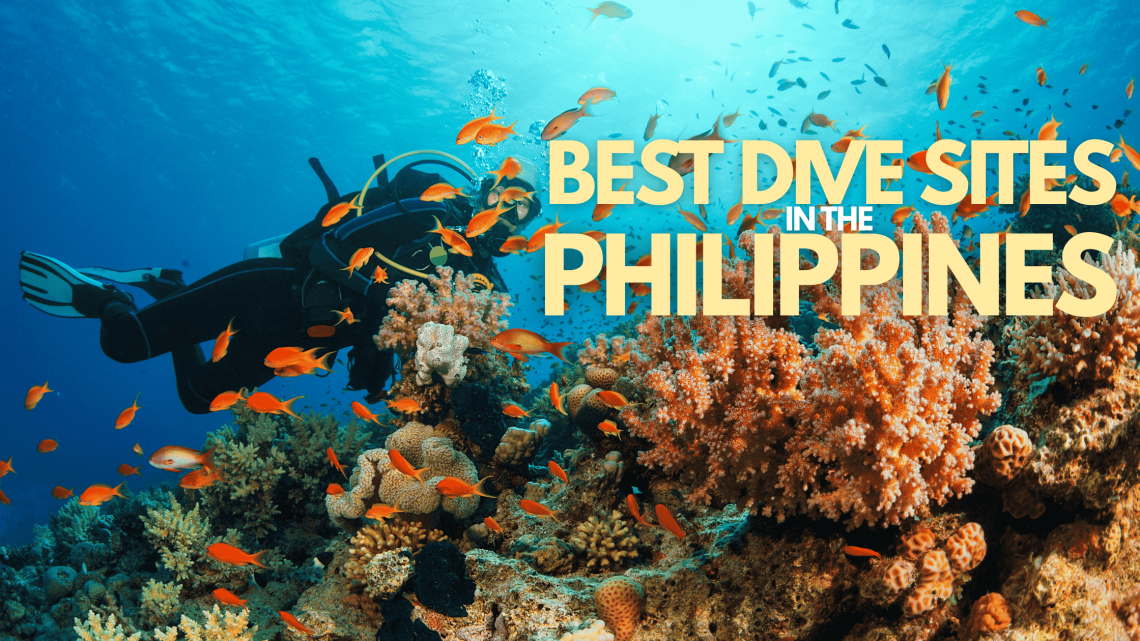
Best Dive Sites in the Philippines That Deserve a Spot on Your Bucket List
With over 7,000 islands scattered across turquoise waters, the Philippines is nothing short of a paradise especially for those of us who live and breathe the ocean. Whether you’re just starting your underwater journey or have long been chasing bubbles around the world, the Philippines will leave you in awe with its shipwrecks, drop-offs, thriving reefs, and rare marine life you didn’t even know existed. In this post, I’m sharing some of the best dive sites in the Philippines that I’ve either explored or dreamt of diving into. These are the places that constantly come up in conversations with fellow divers: sites that have left lasting impressions on so many who’ve plunged into their depths.

Why the Philippines is a Must-Dive Destination
There’s a reason why the Philippines is often awarded as the “world’s leading dive destination”. For starters, it’s located right in the heart of the Coral Triangle, the most biodiverse marine region in the world. That alone sets it apart. But what makes it even more special is the variety it offers: one moment you’re diving through a WWII shipwreck, and the next you’re swimming alongside a school of sardines or peeking at a pygmy seahorse clinging to a seafan.

The warm, tropical climate makes diving possible all year round, and the visibility can go from decent to jaw-dropping depending on the season. But above all, it’s the mix of marine life, coral systems, and the passion of the local dive communities that makes it easy to fall in love with diving here. If these made you want to explore the depths of the Pearl of the Orient, here are the best dive sites in the Philippines that you shouldn’t miss!
Bohol: Walls, Reefs, and Schools of Fish

Bohol was one of the first few places I dove in Visayas, and it set the bar high. Napaling Reef that is a motorcycle ride away from Alona beach and Balicasag Island, just a short boat ride from Panglao, are easily among the best dive sites in the Philippines. The reef walls here are stunning, alive with soft corals and home to sea turtles, jackfish, and barracudas. If you get lucky, you may even chance upon and swim with passing whale sharks and pilot whales. The visibility often feels like someone turned the saturation up on your dive mask. Panglao itself also has some underrated spots, with lots of critters hiding in coral crevices and under ledges. Whether you’re into wide-angle or macro, Bohol gives you both.
Read: 2025 Bohol DIY Travel Guide (Itinerary + Budget)
Palawan: From Wrecks to Remote Reefs
Palawan is a name that always comes up when people talk about the best of Philippine diving. Tubbataha Reefs is the crown jewel, remote, wild, and only accessible via liveaboard between March and June. But those who make the journey are rewarded with walls that drop into the abyss, reef sharks cruising by, and corals that stretch as far as the eye can see.

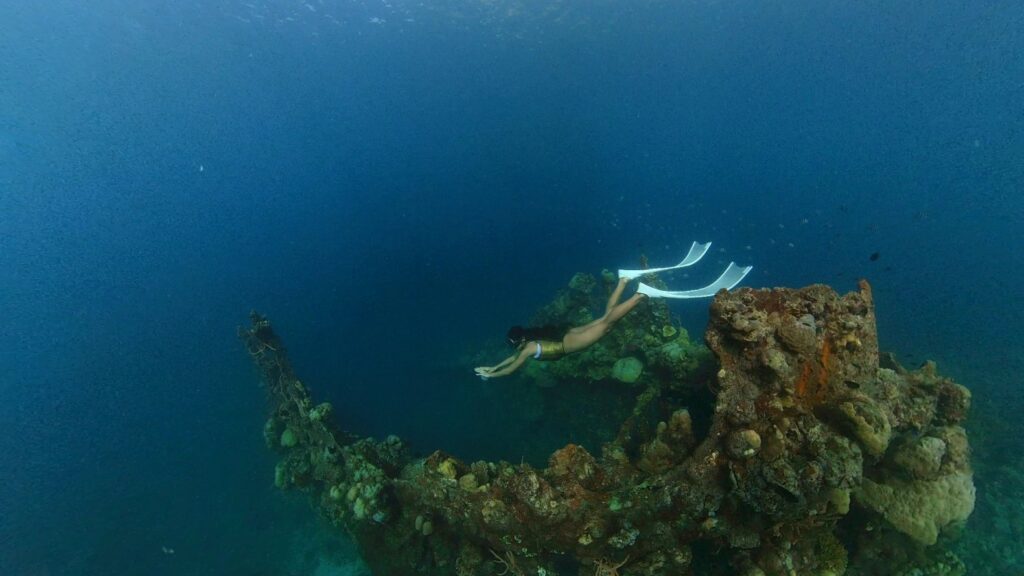
Then there’s Coron, where you can swim through eerie WWII wrecks cloaked in soft corals. It’s a different kind of thrill: part history, part reef, part ghost story. And while El Nido is known more for its limestone cliffs, don’t sleep on its coral gardens. They’re calm, colorful, and full of life: perfect for beginners or a relaxing last dive of the day.
READ: Coron Palawan Budget Travel Guide 2025
Apo Reef Natural Park: The Wild Heart of Mindoro
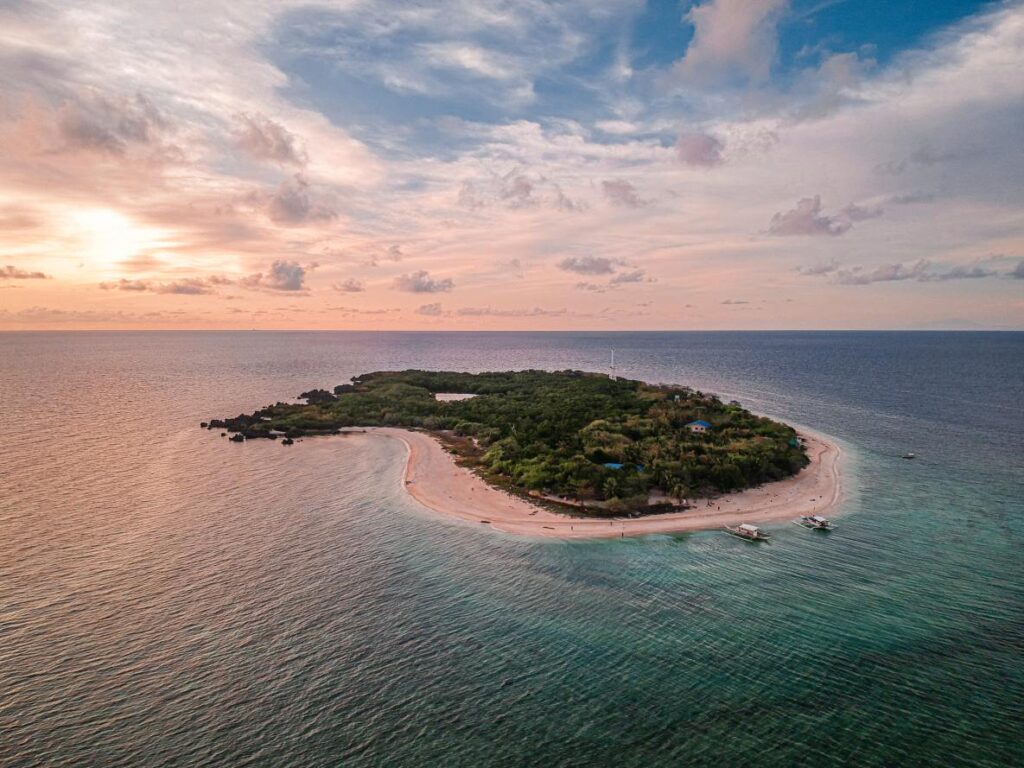
If you ask any experienced diver in the Philippines about their top five dives, Apo Reef almost always makes the cut. This massive reef system, the second largest contiguous in the world, seated off the coast of Mindoro Occidental feels untouched, raw and real. There’s something about its remoteness that adds to its appeal. Dives here go deep sometimes 30 or 40 meters and the current can be strong, but it brings in life: sharks, jacks, barracudas, rays. The coral coverage is incredible, with sea fans and table corals the size of dinner tables. It’s not the easiest to get to, but that’s also why it’s stayed so pristine.
Read: APO REEF NATURAL PARK TRAVEL GUIDE 2025
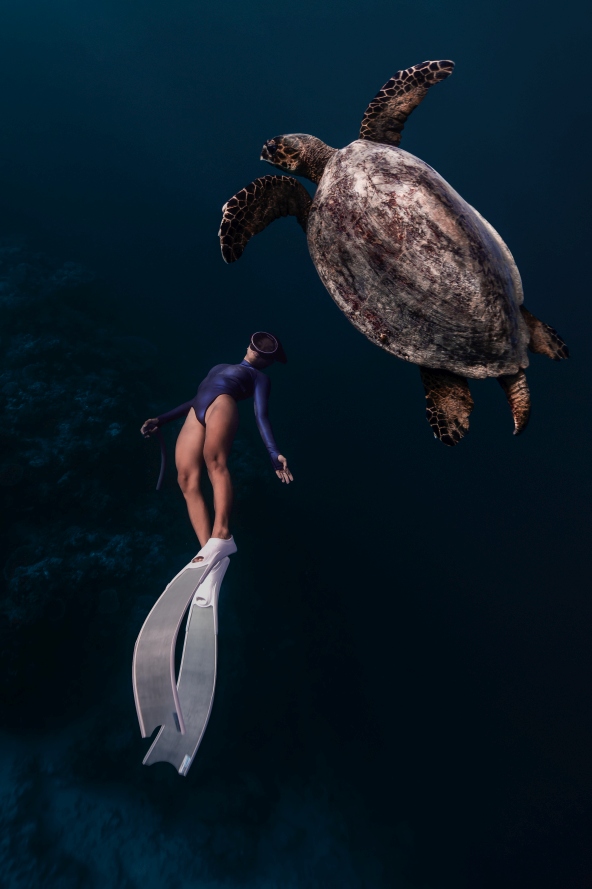
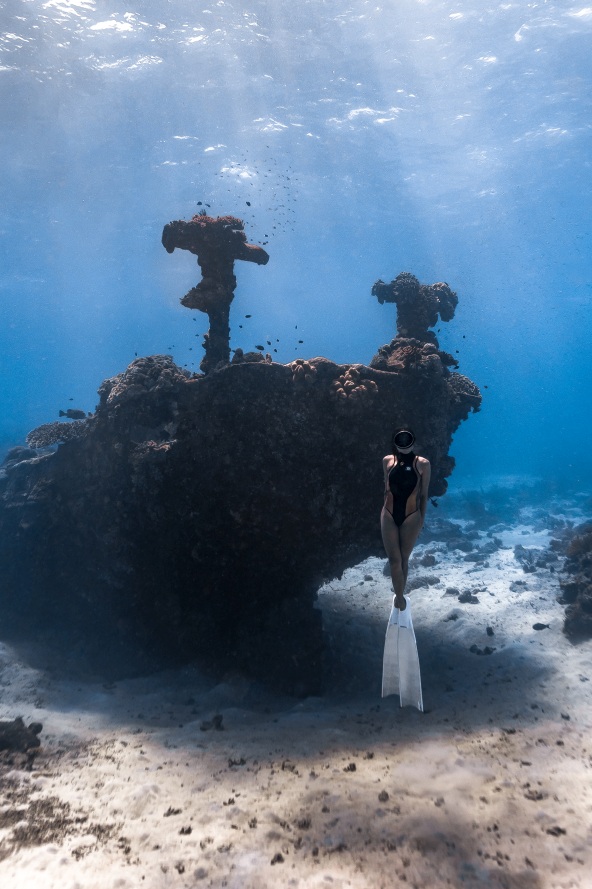
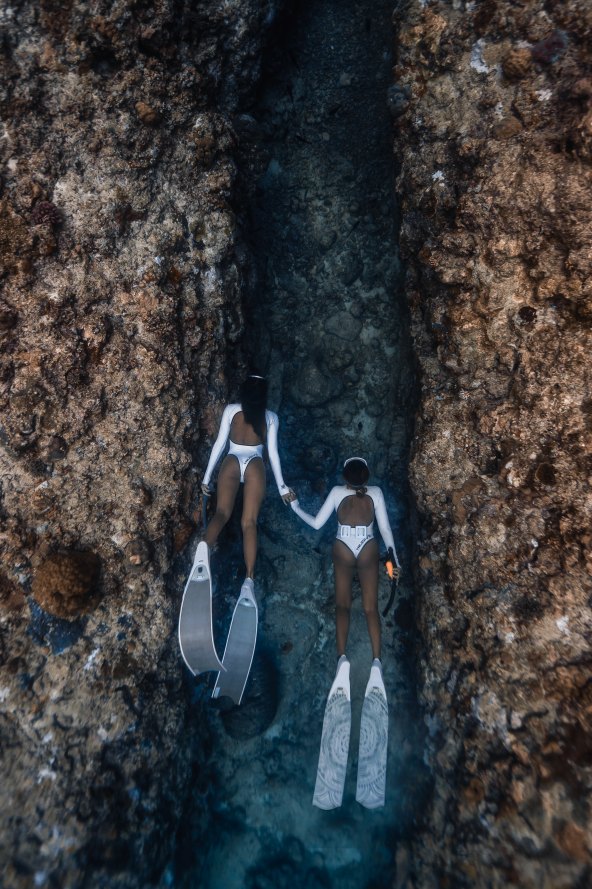
Puerto Galera: A Quick Escape with Big Payoff
Only a few hours from Manila, Puerto Galera in Oriental Mindoro is where many local divers first fell in love with the sport. And for good reason, it packs in a lot. You’ve got drift dives like The Canyons with strong currents and schools of big fish, plus muck dives in Sabang Bay that reveal the tiniest marine marvels. Frogfish, ghost pipefish, seahorses. If you like the weird and wonderful, it’s all here. The dive scene is also well-developed, with great guides, proper gear rentals, and chill beachfront accommodations for those long surface intervals.
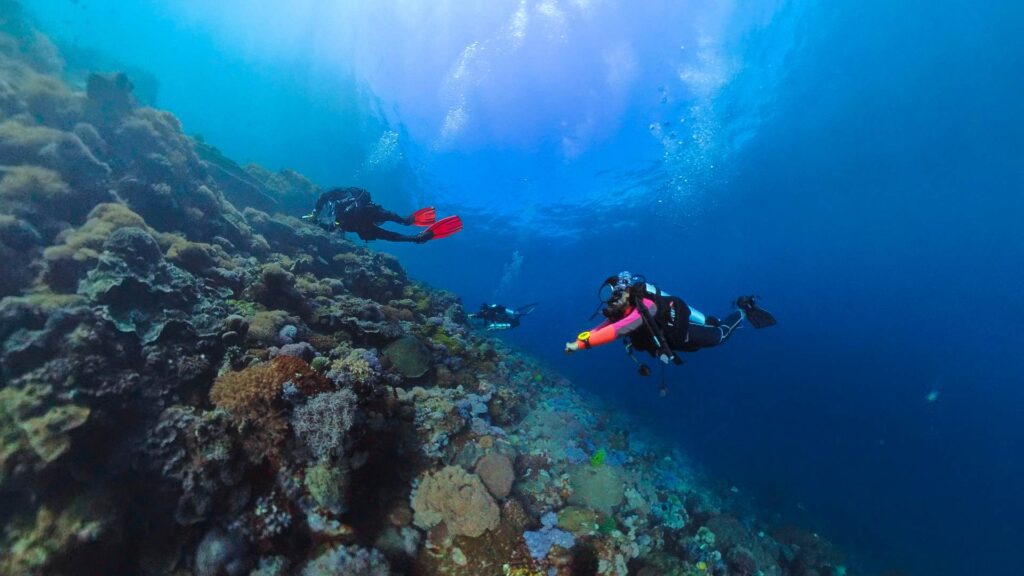
- 2025 Puerto Galera DIY Travel Guide (Itinerary + Budget)
- Freediving in Puerto Galera, Oriental Mindoro, Philippines
Romblon: Where the Little Things Are
Romblon doesn’t show up on every dive tourist’s radar and that’s exactly why it’s so special. It’s one of those places that macro photographers whisper about with a sparkle in their eyes. It’s home to the elusive melibe nudibranchs, hairy shrimp, and other alien-like creatures you’d completely miss without a trained eye (or a good dive guide). But Romblon also offers something more dramatic: a stunning Blue Hole that drops vertically from 5 to over 40 meters. Light filters through its narrow opening, making it one of the most ethereal underwater spaces I’ve ever seen. Quiet, mysterious, and full of surprises. Romblon feels like a secret you almost don’t want to share.
READ:
Batangas: The Capital’s Backyard Reef
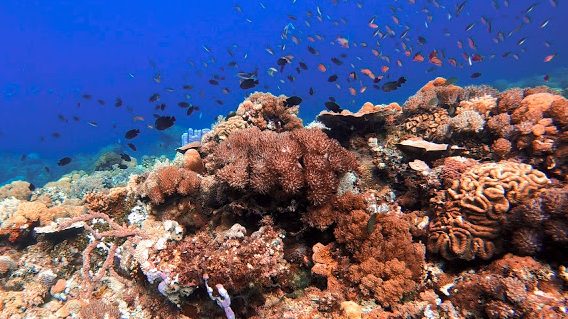
Batangas is proof that you don’t have to travel far for world-class diving. Just a few hours’ drive from Metro Manila, Anilao and Bauan have long been the go-to for weekend divers. Anilao, in particular, is a hotspot for underwater photographers, especially those chasing rare critters on black sand slopes. Muck diving here is next-level, think flamboyant cuttlefish, blue-ringed octopus, and countless nudis. For reef lovers, sites like Cathedral Rock and Twin Rocks offer healthy coral gardens and vibrant reef life, just a short boat ride away from shore.
READ: Best Dive Sites in Batangas
Camiguin: Island of Fire and Coral
Camiguin might be small, but it’s mighty. Known for its volcanic landscapes and hot springs, it also hides some excellent dive spots. Mantigue Island, just off Camiguin’s coast, offers a drop-off reef that teems with tropical fish and coral life. The currents are mild, making it a good spot for less experienced divers. Over at White Island, the underwater slopes surrounding the sandbar are peaceful, colorful, and full of reef fish. Camiguin isn’t as busy as other dive spots, and that’s a big part of its charm. It’s perfect for slow diving and quiet mornings under the sea.
READ:
- CAMIGUIN DIY TRAVEL GUIDE 2025 (Itinerary + Budget)
- 10 BEST Things to Do in Camiguin Island, Philippines
Samal Island: Davao’s Diving Secret

Tucked into Davao Gulf, Samal Island offers a different kind of dive experience. It’s not as well-known as other sites in the Visayas or Luzon, but it’s full of potential. Coral gardens, small wrecks, and artificial reefs have slowly created a dive scene worth exploring. One standout is the Aundanao Wreck, often surrounded by schools of fish and occasional eagle ray sightings. Samal’s dive spots range from beginner-friendly shallows to 30-meter deep sites for those looking for a bit more thrill. It’s a promising destination, especially for those diving in the southern Philippines.
READ:
- Top Places to Visit in Samal Island, Davao del Norte 2024
- ULTIMATE SAMAL ISLAND DIY TRAVEL GUIDE 2025 (Budget + Itinerary)
Siquijor: The Magical Island Beneath the Waves
Siquijor is often wrapped in mystery and folklore, but its dive sites are all about clarity, calm, and color. Places like Tubod Marine Sanctuary and Paliton Wall are known for their easy conditions, rich coral life, and regular turtle sightings. Most dives here are shallow, around 5 to 25 meters, but that doesn’t make them any less rewarding. What I love most about diving in Siquijor is the peace. You feel like you’re in on a quiet little secret, drifting gently among soft corals while the island’s mystical energy hums softly in the background.
Apo Island: Where the Ocean Thrives
Apo Island, off the coast of Dauin in Negros Oriental, is a shining example of marine conservation done right. Decades of local protection efforts have paid off big time. Dive here and you’ll see healthy coral walls, schools of jackfish swirling above your head, and turtles cruising around like they own the place (because they kind of do). Sites like Coconut and Chapel offer great drift dives with strong currents, while others are more relaxed. Whether you’re in the shallows or 30 meters deep, the reef here is alive. Every dive feels like a celebration of what’s possible when we take care of our oceans.
Cebu: Sardines, Sharks, and the Spirit of Resilience
Cebu has some of the country’s most iconic dive experiences. In Moalboal, the sardine run is pure magic—a swirling silver cloud that moves as one, only meters from the shore. It’s shallow enough for beginners, but stunning enough to impress even seasoned divers. Up north in Malapascua, early morning dives at Kimud and Monad Shoal offer a once-in-a-lifetime chance to see thresher sharks rise from the deep. It’s surreal watching those long tails cut through the blue. While some reefs in Cebu are still recovering from typhoons, the marine life keeps drawing people back. The resilience of both the reef and the communities here is inspiring.
Final Thoughts on the Best Dive Sites in the Philippines
There’s a reason divers from all over the world keep coming back (or never leave) the Philippines. The best dive sites in the Philippines aren’t just about what you’ll see underwater, but how those experiences make you feel: humbled, thrilled, reconnected, and alive. From thresher sharks to tiny nudis, shipwrecks to coral gardens, every site offers its own story, its own magic.
If you’ve been thinking about diving in the Philippines, consider this your sign. Pack your fins, clear your schedule, and come see what’s waiting beneath the surface.
You may also want to read:
- What to Do After an Open Water Course?
- A Freediver’s Guide to Choosing the Right Fins
- Freediving Certification in the Philippines



